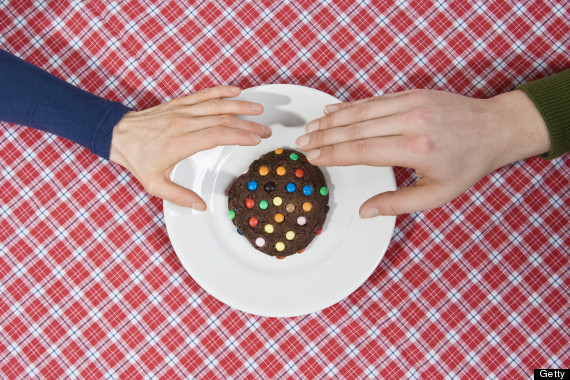Are you new to the study of psychology? It may seem like a vast and daunting topic at first, but understanding a few basic facts can make it easier to get started. The following are just a few of the important things you need to know about this fascinating topic. Once you have a strong understanding of the basics, you will be better prepared to explore psychology in greater depth.

1. Psychology Is the Study of the Mind and Behavior
Psychology is the study of the mental processes and behavior. The term psychology comes from the Greek wordpsyche meaning "breath, spirit, soul" and the logia meaning "study of." Psychology emerged from biology and philosophy and is closely linked to other disciplines including sociology, medicine, linguistics, and anthropology.

2. Psychology Uses Scientific Methods
One of the most common myths about psychology is that it is just "common sense." Unlike common sense, psychology relies on scientific methods to investigate questions and arrive at conclusions. It is through using empirical methods that researchers are able to discover relationships between different variables. Psychologists use a range of techniques to study the human mind and behavior, including naturalistic observation, experiments, case studies, and questionnaires.

3. Psychologists Take Many Different Perspectives
Topics and questions in psychology can be looked at in a number of different ways. Let's take the topic of violence as an example. Some psychologists may look at how biological influences contribute to violence, while other psychologists might look at factors like culture, family relationships, social pressure, and situational variables influence violence. Some of the major perspectives in psychology include the:
- Biological perspective
- Cognitive perspective
- Behavioral perspective
- Evolutionary perspective
- Humanistic perspective
- Learn more about some of the Major Perspectives in Modern Psychology
4. Psychology Has a Many Subfields
There are many different branches of psychology. Introductory students often explore the basics of these various specialty areas, but further exploration of each individual field may depend on what course of study you select. Some of the biggest subfields within psychology are clinical psychology, personality psychology, cognitive psychology, developmental psychology, and social psychology.
5. Psychology Is Not Just About Therapy
When you think of psychology, do you envision a therapist with a notepad jotting down ideas as a client recounts childhood experiences? While therapy is certainly a big part of psychology, it is not the only thing that psychologists do. In fact, many psychologists don't work in the field of mental health at all. Psychology encompasses other areas including teaching, research and consulting. Psychologists work in a wide variety of settings, including:
- Colleges and universities
- Private corporations
- K-12 Schools
- Hospitals
- Government offices
6. Psychology Is All Around You
Psychology is not just an academic subject that exists only in classrooms, research labs, and mental health offices. The principles of psychology can be seen all around you in everyday situations. The television commercials and print ads you see everyday rely on psychology to develop marketing messages that influence and persuade people to purchase the advertised products. The websites you visit on a regular basis utilize psychology to understand how people read, use and interpret online information.
7. Psychology Explores Both Real-World and Theoretical Issues
As you begin your study of psychology, it might seem like some of the theories and research you learn about do not really apply to real-life problems. It is important to remember, however, that psychology is both an applied and theoretical subject. Some researchers focus on adding information to our overall body of knowledge about the human mind and behavior (known as basic research), while other concentrate directly on solving problems and applying psychological problems to real-world situations (known asapplied research).

8. Psychology Offers a Wide Range of Career Options
If you are thinking about majoring in psychology, then you should be pleased to discover that there are many different career paths to choose from. Different career options depend largely on your educational level and work experience, so it is important to research the required training and licensing requirements of your chosen specialty area. Just a few of the possible career options include clinical psychology, forensic psychology,health psychology, and industrial-organizational psychology.
9. Psychology Studies Both Normal and Abnormal Behavior
When many people think about psychology, they immediately think about the diagnosis and treatment of abnormal behavior. However, it is important to remember that psychology studies normal behavior as well.
10. Psychology Seeks to Describe, Explain, Predict, Modify and Improve Behaviors
There are four major goals of psychology:
- To describe human thought and behavior
- To explain why these behaviors occur
- To predict how, why and when these behaviors will occur again in the future
- To modify and improve behaviors to better the lives of individuals and society as a whole
As you can see, psychology is a rich and fascinating subject that has practical applications in many different areas of life. If you have ever wanted to learn more about why people think and act the way they do, then studying psychology is a great way to gain greater insight into the human experience.
source : http://psychology.about.com/
.jpg)










 1. Fat – Posting a calorie chart in fast food restaurants leads people to choose
1. Fat – Posting a calorie chart in fast food restaurants leads people to choose 2. Fatherhood – Expectant fathers can sometimes experience a sympathetic pregnancy where they have symptoms like back ache, weight gain, strange food cravings and nausea. This has also been found to happen in some species of monkey.
2. Fatherhood – Expectant fathers can sometimes experience a sympathetic pregnancy where they have symptoms like back ache, weight gain, strange food cravings and nausea. This has also been found to happen in some species of monkey. 3. Alcohol – As many as 9% of adult Americans have been to an
3. Alcohol – As many as 9% of adult Americans have been to an  4. Teddy Bear – 1 in 5 women and 1 in 20 men admit to sleeping with a cuddly toy on a regular basis (Kanner, 1995).
4. Teddy Bear – 1 in 5 women and 1 in 20 men admit to sleeping with a cuddly toy on a regular basis (Kanner, 1995). 5. Mental Health – Suicidal thinking or behaviour is the most common reason for people to be admitted into a mental institution (Jacobson, 1999).
5. Mental Health – Suicidal thinking or behaviour is the most common reason for people to be admitted into a mental institution (Jacobson, 1999). 6. Warm Weather – Women who live in
6. Warm Weather – Women who live in  7. Rape – The U.S has the highest rate of rape for any industrialized nation. 4 times higher than Germany, 12 times higher than England and 20 times higher than Japan (Rozee, 2005).
7. Rape – The U.S has the highest rate of rape for any industrialized nation. 4 times higher than Germany, 12 times higher than England and 20 times higher than Japan (Rozee, 2005). 8. Anxiety – People with generally high levels of anxiety are more likely to remember pictures of threatening faces than calmer people (bradley et al, 1998).
8. Anxiety – People with generally high levels of anxiety are more likely to remember pictures of threatening faces than calmer people (bradley et al, 1998). 9. Trypanophobia – Fear of injection
9. Trypanophobia – Fear of injection 10. Triskaidekaphobia – Fear of the number 13
10. Triskaidekaphobia – Fear of the number 13 11. Soceraphobia – Fear of parents in law
11. Soceraphobia – Fear of parents in law 12. Pogonophobia – Fear of beards
12. Pogonophobia – Fear of beards 13. Phobophobia – Fear of phobias
13. Phobophobia – Fear of phobias 14. Olfactophobia – Fear of smells
14. Olfactophobia – Fear of smells 15. Mnemophobia – Fear of memories
15. Mnemophobia – Fear of memories 16. Laliophobia – Fear of speaking
16. Laliophobia – Fear of speaking 17. Latrophobia – Fear of doctors or going to the doctors
17. Latrophobia – Fear of doctors or going to the doctors 18. Geliophobia – Fear of laughter
18. Geliophobia – Fear of laughter 19. Chronophobia – Fear of time
19. Chronophobia – Fear of time 20. Catoptrophobia – Fear of mirrors
20. Catoptrophobia – Fear of mirrors 21. Allodoxophobia – Fear of opinions
21. Allodoxophobia – Fear of opinions 22. Habits – On average it takes 66 days to form a habit.
22. Habits – On average it takes 66 days to form a habit. 23. Day Dreams – On average your mind wanders 30% of the time.
23. Day Dreams – On average your mind wanders 30% of the time. 24. Influence – We think that other people are more easily influenced than ourselves.
24. Influence – We think that other people are more easily influenced than ourselves. 25. Sleep Sex – 1 in 12 people have sex in their sleep.
25. Sleep Sex – 1 in 12 people have sex in their sleep. 26. Lying – The most common
26. Lying – The most common  27. More Lies! – The average person tells 4 lies a day, 1460 a year and a total of 87,600 by the time they’re 60.
27. More Lies! – The average person tells 4 lies a day, 1460 a year and a total of 87,600 by the time they’re 60. 28. Happy Sun – People who spend more time in the sun are likely to be happier and happy people are more likely to fall in love because their happiness is infectious.
28. Happy Sun – People who spend more time in the sun are likely to be happier and happy people are more likely to fall in love because their happiness is infectious. 29. Eye Contact – If someone makes eye contact with you for 60% of a conversation they’re bored, 80% and they’re attracted to you and 100% of the time then they are threatening you.
29. Eye Contact – If someone makes eye contact with you for 60% of a conversation they’re bored, 80% and they’re attracted to you and 100% of the time then they are threatening you. 30. Attraction – The pupil of your eye expands up to 45% when you look at someone you love.
30. Attraction – The pupil of your eye expands up to 45% when you look at someone you love. 31. Awkward Silences – It takes 4 seconds for a silence to become awkward.
31. Awkward Silences – It takes 4 seconds for a silence to become awkward. 32. Swearing – When you’re hurt cursing helps to reduce pain.
32. Swearing – When you’re hurt cursing helps to reduce pain. 33. Nonsense – We can udnretsnad any msseed up stnecene as lnog as the lsat and frsit lteerts of wdros are in crrcoet palecs
33. Nonsense – We can udnretsnad any msseed up stnecene as lnog as the lsat and frsit lteerts of wdros are in crrcoet palecs 34. Recall – Its easier to remember things with your eyes closed.
34. Recall – Its easier to remember things with your eyes closed. 35. Television – Unhappy people watch more TV.
35. Television – Unhappy people watch more TV. 36. Brothers and Sisters – Having siblings is proven to help socialization with peers.
36. Brothers and Sisters – Having siblings is proven to help socialization with peers. 37. Clothes – What we wear affects how we behave.
37. Clothes – What we wear affects how we behave. 38. Crying – When crying from happiness the first tear will come from the right eye but if you are crying from sadness it will come from the left.
38. Crying – When crying from happiness the first tear will come from the right eye but if you are crying from sadness it will come from the left. 39. Texting – Most people text faster when its someone they like.
39. Texting – Most people text faster when its someone they like. 40. Flirting – When flirting the average amount of glances to ‘send a signal’ is 3.
40. Flirting – When flirting the average amount of glances to ‘send a signal’ is 3. 41. Motivation – Usually thinking of a successful outcome will reduce our motivation rather than increase it.
41. Motivation – Usually thinking of a successful outcome will reduce our motivation rather than increase it. 42. Control – In Milgrams obedience study 63% of participants kept giving seemingly lethal electric shocks because an authority figure was telling them to.
42. Control – In Milgrams obedience study 63% of participants kept giving seemingly lethal electric shocks because an authority figure was telling them to. 43. Psychology – The word psychology comes from the Greek word psyche meaning ‘breath, spirit, soul’ and the logia meaning ‘study of.’
43. Psychology – The word psychology comes from the Greek word psyche meaning ‘breath, spirit, soul’ and the logia meaning ‘study of.’ 44. Discipline – Negative reinforcement works better than punishment as a disciplinary measure.
44. Discipline – Negative reinforcement works better than punishment as a disciplinary measure. 45. Smile! – Smiling can make you feel happier.
45. Smile! – Smiling can make you feel happier. 46. Smart Cats – Cats have almost twice as many neurons in their brain as dogs.
46. Smart Cats – Cats have almost twice as many neurons in their brain as dogs. 47. Booze Crime – Alcohol is involved in 90% of cases of sexual assault on college campuses.
47. Booze Crime – Alcohol is involved in 90% of cases of sexual assault on college campuses. 48. Marriage – Almost half of all married couples 75 and older still have sex on a regular basis.
48. Marriage – Almost half of all married couples 75 and older still have sex on a regular basis. 49. Ghosts – Over half of the U.S population believe in psychic phenomena.
49. Ghosts – Over half of the U.S population believe in psychic phenomena. 50. Medicine – Placebos can be as good as real treatments.
50. Medicine – Placebos can be as good as real treatments. 51. Failure – Freud initially only sold 700 copies of the interpretation of dreams.
51. Failure – Freud initially only sold 700 copies of the interpretation of dreams. 52. Self Fulfilling Prophecy – The Stamford prison experiment had to be stopped after 6 days instead of 14 because the participants (and experimenter) started to become cruel.
52. Self Fulfilling Prophecy – The Stamford prison experiment had to be stopped after 6 days instead of 14 because the participants (and experimenter) started to become cruel. 53. Intelligence – Studies have shown that eating food without preservatives can improve I.Q by up to 14%.
53. Intelligence – Studies have shown that eating food without preservatives can improve I.Q by up to 14%. 54. Stress – Excessive stress can alter brain cells, structure and function.
54. Stress – Excessive stress can alter brain cells, structure and function. 55. Sexy Smile – Smiling is 69% more attractive than wearing makeup (Orbit complete healthy smile campaign, 2009)
55. Sexy Smile – Smiling is 69% more attractive than wearing makeup (Orbit complete healthy smile campaign, 2009) 56. Brain – The brain is made up of 75% water.
56. Brain – The brain is made up of 75% water. 57. Perfect Memory – Akira Haraguchi recited 100,000 digits of pi in 16 hours.
57. Perfect Memory – Akira Haraguchi recited 100,000 digits of pi in 16 hours. 58. Insomnia – The world record time without sleep is 264 hours.
58. Insomnia – The world record time without sleep is 264 hours. 59. Brain Structure – There are 100 billion neurons in the brain.
59. Brain Structure – There are 100 billion neurons in the brain. 60. Pre-Historic Man – Our brain size has fallen 10% in mass since we were hunter gatherers.
60. Pre-Historic Man – Our brain size has fallen 10% in mass since we were hunter gatherers. 61.Brain Weight – The human brain weighs 1300-1400g which is proportionately more for body size than any other species.
61.Brain Weight – The human brain weighs 1300-1400g which is proportionately more for body size than any other species. 62. Short Term Memory – Working memory can hold 7+/- 2 pieces of information.
62. Short Term Memory – Working memory can hold 7+/- 2 pieces of information. 63. Colour Productivity – People are often more productive in blue rooms
63. Colour Productivity – People are often more productive in blue rooms 64.Olfactory Memory – Your sense of smell is the sense which is best attached to your memory.
64.Olfactory Memory – Your sense of smell is the sense which is best attached to your memory. 65.Stress Memory – A small amount of stress helps you to remember things better but a large amount hinders your memory.
65.Stress Memory – A small amount of stress helps you to remember things better but a large amount hinders your memory. 66.Talking – Men say approximately 12,500 words per day whereas women say 22,000.
66.Talking – Men say approximately 12,500 words per day whereas women say 22,000. 67. Primal Urges – The pursuit of food and water is the most powerful motivator. (Doddard & Miller, 1950)
67. Primal Urges – The pursuit of food and water is the most powerful motivator. (Doddard & Miller, 1950) 68. Strange Cells – Some of the cells in your visual cortex only respond to horizontal information and others only respond to vertical stimuli (Hubel & Weisel, 1959)
68. Strange Cells – Some of the cells in your visual cortex only respond to horizontal information and others only respond to vertical stimuli (Hubel & Weisel, 1959) 69. Colour Blindness – 9% of men and 0.5% of women are colour blind.
69. Colour Blindness – 9% of men and 0.5% of women are colour blind. 70. Scientific Discovery – In 1909, a scientist by the name of Thomas H. Morgan discovered that chromosomes contained inherited information.
70. Scientific Discovery – In 1909, a scientist by the name of Thomas H. Morgan discovered that chromosomes contained inherited information. 71. Women Murder – Female serial killers account for only 8% of all American serial killers, but American females account for 76% of all female serial killers worldwide.
71. Women Murder – Female serial killers account for only 8% of all American serial killers, but American females account for 76% of all female serial killers worldwide. 72. Creativity – We are most creative at night and least creative in the afternoons.
72. Creativity – We are most creative at night and least creative in the afternoons. 73. Baby Empathy – People are more likely to return a lost wallet if there is a baby picture found inside of it.
73. Baby Empathy – People are more likely to return a lost wallet if there is a baby picture found inside of it. 74. Blue – The colour blue causes the brain to release relaxing hormones.
74. Blue – The colour blue causes the brain to release relaxing hormones. 75. Emotions – The only innate emotions are joy, acceptance, fear, surprise, sadness, disgust, anger, and anticipation. Other more complicated emotions like love and guilt are believed to be combinations of these. (Plutchik, 1980)
75. Emotions – The only innate emotions are joy, acceptance, fear, surprise, sadness, disgust, anger, and anticipation. Other more complicated emotions like love and guilt are believed to be combinations of these. (Plutchik, 1980) 76. Point the Finger – People are more likely to blame other people rather than the situation when something bad happens.
76. Point the Finger – People are more likely to blame other people rather than the situation when something bad happens. 77. Personality – There are 5 key aspects to personality: extraversion, agreeableness, conscientiousness, neuroticism and openess.
77. Personality – There are 5 key aspects to personality: extraversion, agreeableness, conscientiousness, neuroticism and openess. 78. Getting Lucky – Sex is not distributed equally, over 50% of sexual activity in the US is performed by only 15% of the population (General social survey, 1998).
78. Getting Lucky – Sex is not distributed equally, over 50% of sexual activity in the US is performed by only 15% of the population (General social survey, 1998). 79. Memory Loss – Retro grade amnesia is a condition where you don’t remember anything before your trauma.
79. Memory Loss – Retro grade amnesia is a condition where you don’t remember anything before your trauma. 80. Contradiction – Cognitive dissonance is when you have two conflicting beliefs and you adjust one to fit the other.
80. Contradiction – Cognitive dissonance is when you have two conflicting beliefs and you adjust one to fit the other. 81. Reading – People read faster with longer lines but prefer shorter ones.
81. Reading – People read faster with longer lines but prefer shorter ones. 82. Imagination – Most people imagine things from above and at an angle.
82. Imagination – Most people imagine things from above and at an angle. 83. Optical Illusion – Chromostereopsis is when two colours are together and one of them sticks out more than the other. This affect is most obvious with the colours red and blue.
83. Optical Illusion – Chromostereopsis is when two colours are together and one of them sticks out more than the other. This affect is most obvious with the colours red and blue. 84. Group Behaviour – Larger groups make poorer and more emotional decisions than small groups or individuals.
84. Group Behaviour – Larger groups make poorer and more emotional decisions than small groups or individuals. 85. Racial Recognition – Studies reveal that people recognize and interpret the emotional facial expressions of those in their own race faster than those who are a different race. (MacDonald & Matthew, 2008)
85. Racial Recognition – Studies reveal that people recognize and interpret the emotional facial expressions of those in their own race faster than those who are a different race. (MacDonald & Matthew, 2008) 86. Monotony – Repetition physically changes your brain as new connections are made between brain cells.
86. Monotony – Repetition physically changes your brain as new connections are made between brain cells. 87. Focus – The human attention span maxes out at about 10 minutes, over that and we will tend to revert to daydreaming.
87. Focus – The human attention span maxes out at about 10 minutes, over that and we will tend to revert to daydreaming. 88. Friends – The maximum number of close relationships/friendships you can maintain is between 50 and 150.
88. Friends – The maximum number of close relationships/friendships you can maintain is between 50 and 150. 89. Girl Talk – ‘Girl talk’ helps women to form closer bonds but also increases depression and anxiety.
89. Girl Talk – ‘Girl talk’ helps women to form closer bonds but also increases depression and anxiety. 90. Tattoos – According the the New York Times 17% of people regret getting a tattoo.
90. Tattoos – According the the New York Times 17% of people regret getting a tattoo. 91. Popular – Anti-social or unpopular teenage girls are 70% more likely to put on weight than popular, sociable girls (Lemeshow, 2008)
91. Popular – Anti-social or unpopular teenage girls are 70% more likely to put on weight than popular, sociable girls (Lemeshow, 2008) 92. Yawning – A study at John Hopkins University found that the myth that you yawn for your brain to get more oxygen is untrue. It is in fact to cool your brain down.
92. Yawning – A study at John Hopkins University found that the myth that you yawn for your brain to get more oxygen is untrue. It is in fact to cool your brain down. 93. Mothers Love – Children aged between 6 and 12 are more likely to wake up hearing their mother’s voice calling their name than hearing the sound of a home smoke alarm.
93. Mothers Love – Children aged between 6 and 12 are more likely to wake up hearing their mother’s voice calling their name than hearing the sound of a home smoke alarm. 94. Money – People earn on average $200 to $600 more per IQ point but the lower the IQ the more sensibly people spend their money (Jay Zagorsky, 2007).
94. Money – People earn on average $200 to $600 more per IQ point but the lower the IQ the more sensibly people spend their money (Jay Zagorsky, 2007). 95. First Time – People who lose their virginity late (older then 19) have a higher income, higher education and a more healthy relationship later in life than those who lost their virginity earlier (Harden, 2012).
95. First Time – People who lose their virginity late (older then 19) have a higher income, higher education and a more healthy relationship later in life than those who lost their virginity earlier (Harden, 2012). 96. Socialization – Your friends on average have more friends than you do. If you think about it this is because if you are friends with them they are more likely to be popular. (Scott, 1991)
96. Socialization – Your friends on average have more friends than you do. If you think about it this is because if you are friends with them they are more likely to be popular. (Scott, 1991) 97. Pain – Emotional pain is remembered more than physical pain and has more effect on your behaviour.
97. Pain – Emotional pain is remembered more than physical pain and has more effect on your behaviour. 98. Seafood – In the March 2003 edition of Discover magazine, a report describes how people in a 7-year study who ate seafood at least one time every week had a 30% lower occurrence of dementia.
98. Seafood – In the March 2003 edition of Discover magazine, a report describes how people in a 7-year study who ate seafood at least one time every week had a 30% lower occurrence of dementia. 99. Hormones – The hormone estrogen which is found in both men and women, but in more abundance in women, causes an improvement in your memory function.
99. Hormones – The hormone estrogen which is found in both men and women, but in more abundance in women, causes an improvement in your memory function. 100. Brain Enlargement – London taxi drivers, who have to remember every street in London, have an enlarged hippocampus suggesting that this area grows as you memorize more information. (Maguire et al, 2000)
100. Brain Enlargement – London taxi drivers, who have to remember every street in London, have an enlarged hippocampus suggesting that this area grows as you memorize more information. (Maguire et al, 2000)